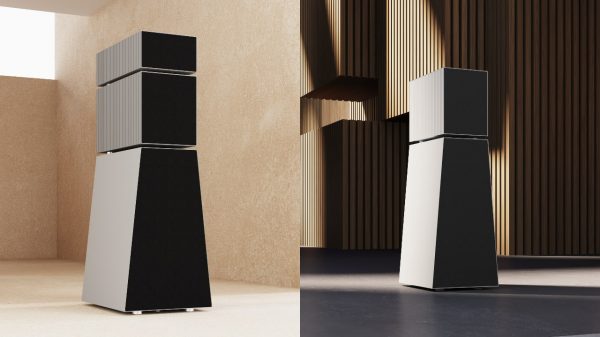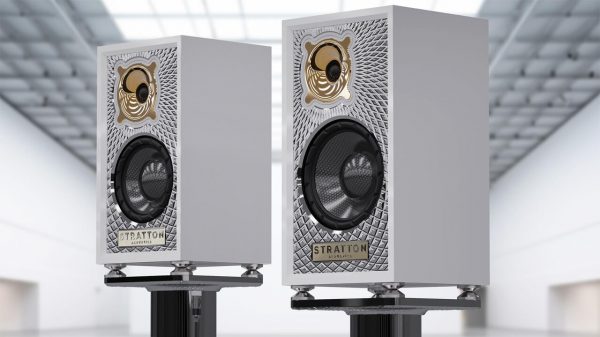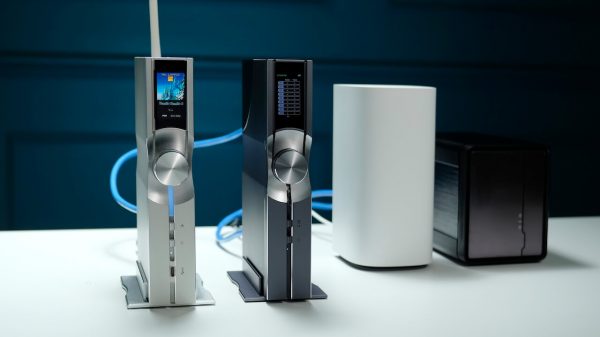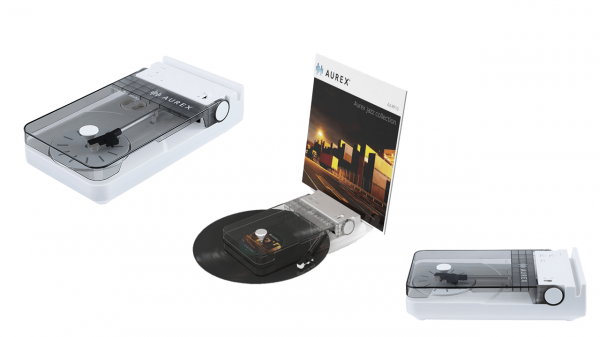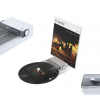It was May 1996 when the camera purchasing public first learned of a special little camera called the Canon ELPH, born of a new photo format the industry optimistically called the Advanced Photo System. Virtually overnight, the camera-buying public made Canon’s ELPH not simply the photo industry’s top selling compact camera, but far and away, the clearly dominant camera in the new Advanced Photo System (APS) format.
Even after APS gave way to advanced digital imaging technology, it is the combination of style-and-substance, form-and-function, that keeps Canon cameras number one worldwide. By the end of 1996, Canon’s stylish little ELPH camera spectacularly rode the first APS wave to unprecedented popularity while competitor entries languished in the shallows of APS market share. What’s more, Canon added to its initial offering with three additional ELPH Advanced Photo System cameras. The ELPH brand’s triumphal first decade as the sleek and chic cameras of choice was underway, big time.
So now, ten years after Canon introduced the world to the name ELPH (with a unique spelling designed to differentiate it from Santa’s helpers) and six years after the first Digital ELPH debuted, a trio of new Digital ELPH cameras is en route to retailers across the country. It’s been an eventful decade for the Canon ELPH camera
Enter APS: A First Step to Changing Consumer Behavior
In an effort to invigorate the camera market, five leading companies set out to develop a new camera system that would replace the old 35mm “point-and-shoots,” energize the consumer camera marketplace and increase unit sales.
It was from this collaboration that the five companies created the Advanced Photo System camera format. This format emphasized ease-of-use, the ability to change the format of the pictures from standard print size all the way to panoramic with no more than the turn of a dial; the ability to view the entire roll of prints in one glance thanks to the convenient and standard index print and the ability to store negatives in a safe, scratch-free environment in the cocoon-like cartridge that the unexposed film came in.
Canon ELPH cameras incorporated all of the signature functions of the then new Advanced Photo System format- that is where any similarity to the other Advanced Photo System cameras ended. The Canon ELPH camera excited the senses, inspired the imagination, and made fashion-forward style a key component of camera-purchasing decisions, as well as a key purse or pocket-sized accessory for a night on the town.
Barely the size of a deck of playing cards, Canon revolutionized camera design. The company built the ELPH camera in a stainless steel body that provided a reassuring sense of substance and a luxurious heft despite the camera’s diminutive size. Its iconic design conveyed a “shoot anywhere, anytime” attitude and bespoke style whether dangling like a precious pendant, bangle-ing like a bracelet or slyly tucked away in a classic clutch.
The secret of Canon’s out-of-the-box success was not simply to market the new film format and camera features, but to market those features and format in an attractive, go anywhere, pocket-sized package and to create the kind of “gotta have it” demand that would be the key to the Canon ELPH’s future. As the Canon ELPH camera first became synonymous with the Advanced Photo System, it would soon become synonymous with a sleek, chic, lifestyle-oriented camera as a fashion accessory
The Soul of Simplicity
Call it providential or simply a ‘eureka’ moment of creative clarity, but the design that remains the hallmark of the ELPH brand began with the simplest of all camera representations: the box and circle. This shorthand sketch of a camera is as practically identifiable as the picture-writing symbols used on universal road signs and provided an initial inspiration to the ELPH camera’s original designer, Yasushi Shiotani.
“When you give anybody a piece of paper and ask them to draw a camera, they will draw a box and a circle. This is the most simple, iconic image of a camera that exists in everyone’s mind,” explained Shiotani.
The product engineers gave Shiotani and his design team basic specifications for weight and size and their mandate: create the world’s smallest autofocus zoom camera and oh yes, make certain it communicates a snappy style statement about the users without compromising the quality of the pictures or the ease-of-use of the camera.
The simple box and circle theme notwithstanding, the final design of that first ELPH camera resulted from more than 100 sketches and ultimately took the marriage of style and substance to another level.
They constructed the camera body out of stainless steel with a newly-developed finish that gave it a more luxurious feel rather than the aluminum alloy Canon typically used. The fresh new look of the outside would match the innovation and technology that lived inside. Canon’s ELPH model introduced the concept of the camera-as-a-fashion-accessory- a camera that could be attached to an elegant neck chain and worn like an item of jewelry, or slipped slimly into a blazer breast pocket in lieu of a silk hanky.
Canon’s research and development department received the requirements and in an environment nearly academic in its purity. Shiotani deliberately avoided viewing the R& D team’s work in progress and provided them with no feedback. “That way,” recalled Shiotani, “we could stay true to our vision and avoid a diluted consensus view.”
The result was true to the original design and in short order; the Canon ELPH camera became the dominant player in the Advanced Photo System global market and for many consumers, embodied the very essence of what this new camera format promised. Indeed, within months of its launch the Canon ELPH (also called the IXY in Asia, and IXUS in Europe) camera accounted for nearly a third of the worldwide Advanced Photo System market. All told, Canon sold more than 10.5 million Advanced Photo System ELPH cameras1.
Canon ELPH cameras continued to dominate the Advanced Photo System marketplace and with each new ELPH edition its design influence and sales successes spawned a spate of imitators. No slaves simply to sizzle and style, the world hailed Canon ELPH cameras for their technical innovation, optical excellence, physical integrity and the level of quality that Canon cameras are renowned for. Nonetheless, within five years the Canon ELPH camera would transcend the Advanced Photo System format and embrace a new, innovative, and truly advanced photo system: digital.
Designer Digital
Building on the tradition established by the Advanced Photo System version of the Canon ELPH camera, designer Seiichi Omino set out to create a digital ELPH camera that embodied the brand’s essence without making it a cookie cutter copy of the earlier cameras. To be sure, Omino respected the original box and circle design created by his colleague Yasushi Shiotani but mechanical considerations – given the vast internal differences between film-based and digital cameras – meant that modifications to the outside must be made.
“We could not place the optical axis precisely in the center of the Digital ELPH yet we knew we had to find a way to incorporate the ELPH models’ key motif without sacrificing the camera’s sense of balance,” Omino revealed. “We studied the wide space in the center of the camera and found that by moving the circle just slightly off center we could accommodate the internal requirements of the camera while adding character to its exterior. This off-center orientation became the defining look for the new, digital generation of ELPH cameras.”
Simplicity had provided the solution to a design challenge and would once again translate to cutting edge elegance. In May 2000, some four years after Canon debuted its first consumer-targeted PowerShot digital camera, they introduced the PowerShot S100 Digital ELPH, the world’s smallest and lightest digital camera (for its time). At 2.1 megapixels with a 2.0x optical zoom lens, the inaugural Digital ELPH camera soared to the head of its class, convincingly capturing purchasing preferences, and selling 800,000 units globally2. Canon’s position as the number one camera manufacturer in the world remained secure.
From Geek Chic to Tech Couture
In the beginning, maintaining an au courant fashion focus for an unconventional accessory such as a digital camera required a delicate balance of form and function. While early adopters, camera buffs and gadget geeks easily embraced the impressive, cutting-edge technology and quality packed into these digital dynamos, the fashionistas, the club crowd and the celebrity social set employed a more stylin’ criteria for what to use to capture their oh so now party pictures. It was decidedly not enough for a camera to take great pictures. The camera had to make them look great taking the pictures. As a fashion accessory, the PowerShot Digital ELPH camera assumed the mantle of “tech couture”…decidedly not haute but definitely hot.
Capitalizing on the trend to minimize, digitize and accessorize with an ELPH, Canon introduced the PowerShot SD10 Digital ELPH camera in 2003 just in time for New York’s legendary Fall Fashion week. Reaffirming the old adage that there is no such thing as being too thin, the SD10 model was the world’s smallest four megapixel digital camera to that point, weighing in at a mere 3.5 ounces and measuring a scant 3.6 x 1.9 x 0.7 inches.
Adding to the allure of this fashion model, Canon offered the PowerShot SD10 Digital ELPH camera in four art deco-tech colors that could attractively accent an outfit or subtly blend with it, depending on the mood and moment. Those feeling formal could select the lacquer-“esque” shine of grand piano black or the pearl-like shimmer of iridescent white. For those who preferred their four megapixels to maintain a classic metallic motif, Canon also offered the SD10 model in a satin bronze patina and a platinum/silver finish.
Ensuring that the Canon-Couture connection was not lost on the savvy, style-conscious public, these four color-keyed renditions of the SD10 Digital ELPH made their debut on the Fashion Week catwalk of designer and star costumer, Patricia Field. Since then, Canon reprised its color-cased Digital ELPH design three times with new color schemes. The most recent iteration of this colorful camera is the just released, 7.1 megapixel PowerShot SD40 Digital ELPH offered in Twilight Sepia, a dark rich brown with gold accents; Precious Rose, a blushing pink attention getter; Noble Blue, a shade worthy of the finest designer navy suit and finally, the soft yet solid sophistication of Olive Grey.
33 Million ELPH Fans Can’t Be Wrong3
The breakthrough year for the mass adoption of digital “point-and-shoot” cameras was 2004 with sales totaling just under 20-million units in the United States alone (a staggering 32 percent increase over 2003’s unit sales). Not coincidentally, in 2004 Canon sold 12.7 million digital point and shoot cameras4, taking over the number one sales position and capturing the number one market share both in the United States and worldwide. It is a position that Canon Compact Digital cameras retain to this day.
To be sure, Canon’s 2004 sales successes were helped in a big way by the PowerShot SD400 Digital ELPH model. Introduced in October 2004, just in time for the holiday buying season, this five-megapixel Digital ELPH camera is the line’s most popular model to date, selling more than 2-million units5 worldwide.
By 2005, the industry sold 24 million cameras in the US market – an increase of approximately 21 percent over 2004 – and, as 2006 winds down, the industry forecasts that annual sales of compact digital cameras in the U.S. will exceed 26-million units. Additionally, while the rate of increasing sales is slowing (due in large part to industry-wide sales of more than 70-million digital point-and shoot-cameras in the United States in the last three years alone), and it is expected that by the close of 2006, fully 61 percent of US households will have at least one digital camera.
Today, as cell phones, PDAs and MP3 players all compete for fashion accessory of the week status and imitation ELPH cameras are a staple in virtually every camera manufacturers digital camera line, the original celebrates its tenth birthday and remains unsurpassed in the public’s estimation and affection. The camera line that set the fashion-tech tone continues to innovate, energize and excite the imagination and continues to produce pictures of impressive quality and clarity. Not surprisingly, Canon has sold more than 22-million Digital ELPH cameras6 worldwide, bringing the total sales count of all ELPH cameras to some 33-million units7 and counting.
It’s been an eventful decade for the Canon ELPH camera…
And the best is yet to come.
ELPH Highlights:
ELPH: May 1996 – Canon’s first ELPH camera was the world’s smallest autofocus zoom compact camera at the time. Yasushi Shiotani’s ‘box and circle’ design went on to become an inspiration for the whole industry.
ELPH Limited Kit: September 1997 – Launched to commemorate Canon’s 60th anniversary, this model of the original ELPH camera was plated in 18-carat gold and came with a golden remote control. Only 30,000 were made available for sale worldwide.
PowerShot S100 Digital ELPH camera: May 2000 – The launch of the 2 Megapixel Digital ELPH represented a new generation of digital camera. Combining convenience with style, it had a broad appeal to an entirely new digital camera market.
PowerShot S400 Digital ELPH camera: February 2003 – Designed to meet user demand for increased resolution and zoom magnification this 4 Megapixel camera had a high-performance 3x optical zoom lens. It had the smallest body size in its class.
PowerShot SD10 Digital ELPH camera: September 2003 – Style and refined elegance were at the heart of this relatively radical redesign. Available in a range of four different colors, the 4 Megapixel camera had front and rear panels made from a newly developed aluminum-magnesium alloy.
PowerShot SD400 Digital ELPH camera: February 2005 – Taking the ELPH signature concepts of style and ultra-compactness to a new level, the 5 Megapixel camera was one of the first Digital ELPH cameras to use DIGIC II.
PowerShot SD500 Digital ELPH camera: February 2005 – The new flagship model in Canon’s Digital ELPH range was the first to offer a 7 Megapixel sensor and the Perpetual Curve design – a sleek and graceful body shape with smoothly contoured edges.
PowerShot SD630 Digital ELPH camera: February 2006 – The 6 Megapixel SD630 model was Canon’s first digital camera to offer an ultra-large 3.0″ LCD monitor. The screen enabled users of this camera to enjoy the benefits of the newly incorporated Focus Checker Function.
PowerShot SD900 Digital ELPH camera: September 2006 -The exclusive titanium exterior of the SD900 model is matched by a specification that includes 10 Megapixel resolution, an ultra-compact 3x optical zoom lens and Canon’s new DIGIC III image processor with advanced noise reduction and face detection technology.
About Canon U.S.A., Inc.
Canon U.S.A., Inc. delivers consumer, business-to-business, and industrial imaging solutions. The Company is listed as one of Fortune’s Most Admired Companies in America and is rated #35 on the BusinessWeek list of “Top 100 Brands.” Its parent company Canon Inc. (NYSE:CAJ) is a top patent holder of technology, ranking second overall in the U.S. in 2005, with global revenues of $31.8 billion. For more information, www.usa.canon.com.
1 According to Canon Inc internal reference.
2 According to Canon Inc internal reference.
3 According to Canon Inc internal reference.
4 According to Canon Inc internal reference.
5 According to Canon Inc internal reference.
6 According to Canon Inc internal reference.
7 According to Canon Inc internal reference.

